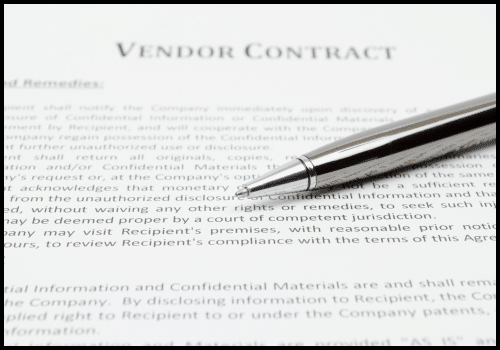
Most individuals have experienced the process of purchasing a vehicle. Think about that process. What are the steps that we as purchasers go through? How do the dealerships assist us in that process? What is the dealership’s approach to close the deal?
- First, a decision is made about what type of vehicle to purchase. This requires research, internet searches, as well as discussions with friends and associates.
- Second, we begin the process of locating the dealerships that can deliver that vehicle based on color, features, availability and cost.
- Third, we negotiate with these dealerships for the best price, eventually finalizing the deal and reaching an agreement of sale.
- Then, once the deal has been consummated and the vehicle is purchased, the dealership will produce a satisfaction survey covering all of the details of the sale process.
This progression through the sales process is a typical client vs. vendor relationship, and it contains one significant flaw. The process of understanding exactly what the client wants while ensuring satisfaction occurs when the transaction is completed. Ensuring satisfaction with the client occurs too late in the process. By not totally understanding the needs and wants of the client from the beginning, the dealership has jeopardized the potential for a lasting ongoing client – vendor relationship.
How do we as vendors understand the clients’ needs at the beginning of the relationship and work towards achieving and exceeding those needs on an ongoing basis? How do we convert this commonly utilized vendor – client relationship into a partnership? First, we need to understand the difference between a client and a partner.
- The definition of a client is a person or group that utilizes professional advice or services.
- The definition of a partner is one who shares or is associated with another in some action or endeavor.
The major difference between a client and a partner is highlighted in the definitions above and really summarizes what we as vendors need to accomplish in order to convert our client relationships to partner relationships.
So how do we as vendors create and sustain this client-vendor partnership?
- At the beginning of our relationship, do we know and understand what our partner wants to achieve in this relationship?
- Are our goals as vendors in line with our client’s goals to ensure both can be accomplished?
- Have we worked together as partners to develop a comprehensive plan and strategy to ensure established deliverables can be achieved?
- Are we monitoring this plan throughout the engagement, adjusting the plan accordingly as issues arise, recording accomplishments and measuring satisfaction?
- Do we as vendors maintain an open mind throughout the engagement, demonstrating flexibility to adjust to continuous unsuspecting changes as they occur, maintaining a professional demeanor, and communicating and resolving differences as they arise?
Whenever we, as vendors, form a professional agreement with a client, we have created a partnership with that client. It is our obligation and ethical responsibility to forge and maintain this relationship. Being proactive in the initial stages of the partnership will establish the platform to accomplish common goals; monitoring, communicating, and adjusting accordingly. Believe in achieving success and you will have a partner for life.
SAS Insights
Strategic Audit Solutions Launches AuditSUITE360 Platform as Demand for Accounts Payable Recovery Technology Surges
Enterprise-grade financial recovery technology delivers 90% efficiency gains in automated cost control Freehold, NJ – May 1, 2025 – Strategic Audit Solutions, a leader in accounts payable recovery audit technology, […]
Continue Reading
The SaaS Revolution- Your Recovery Audit Secret Weapon
The SaaS Revolution: Your Recovery Audit Secret Weapon Let’s be honest, cloud migration isn’t exactly breaking news. But you know what is? The explosive growth of SaaS adoption. Reports1 indicate […]
Continue Reading
AP Recovery Audits- The Essential Guide to Protecting Your Bottom Line
AP Recovery Audits- The Essential Guide to Protecting Your Bottom Line Organizations process millions of transactions annually. Amid this volume, errors are inevitable. Whether it’s duplicate payments, missed credits, or […]
Continue Reading
The Importance of Maintaining a Clean Vendor Master File
The Importance of Maintaining a Clean Vendor Master File The vendor master file is a cornerstone of accounts payable operations and plays a crucial role in maintaining financial integrity and […]
Continue Reading
